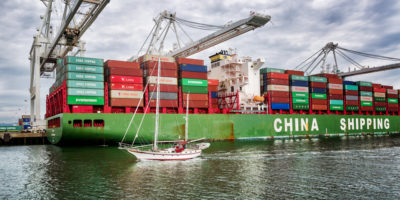-
China
China – WOFE set up process
10 October 2016
- Corporate
Recently People’s Republic of China central government has unveiled and adopted a wide range of initiative to reduce the regulatory burden on daily business operations and provide greater autonomy in investment decision-making.
The reforms aim to give both domestic and foreign investors more autonomy and should make investments in the private sector much easier by reducing bureaucracy and increasing transparency. Investors will have more flexibility to determine the form, amount and timing of their business contributions. In addition, a system of publicly-available, electronic information (including annual filings and a corporate blacklist) will replace the old annual inspection system. Thanks to these reforms China’s requirements will become one step closer to international standards.
In this post I will analyze which are the enterprises affected by the reform; the Negative-list – setting out the industries that still need the approval to be established – and the new application process for company establishment.
Foreign invested enterprises
Generally speaking, foreign invested enterprises are the vehicle through which foreign investors may establish a presence to do business in China, choosing among one of the several different statutory forms recognized by the existing regulatory regime (such as: Wholly Foreign Owned Enterprise – WFOE; Equity Joint Venture – EJV; Contractual Joint Venture – CJV; Foreign Invested Company Limited by Shares; Foreign Invested Partnership Enterprise; or Holding companies). These entities are regulated under stricter laws than domestic companies, and are also subject to the same generally-applicable regulations.
The establishment of FIEs in Mainland China up is currently subject to a rather lengthy and bureaucratic examination and approval process by different Authorities. The same stringent requirements and burdensome procedure apply also to any major change related to FIEs structure, such as: increase or decrease of total investment/registered capital; change of business scope; shares or equity transfer; merger, division or dissolution; etc.
Nowadays, the set-up procedure of a WFOE undergoes through the following steps, having an average time frame of at least 3-4 months for the whole process:
Pre-issuance Business License
- Collection of the basic information from Investor’s side (7 working days)
- Company name pre-approval (5-7 working days)
- Lease agreement (it depends on Investor/Landlord)
- Legalized documents prepare by the Investor for the incorporation (few weeks)
- Certificate of Approval issued by MOFCOM (4 weeks)
- Business license issued by AIC (at least 10 working days)
Post-issuance Business License
- Carve company chops (1-2 working days)
- Foreign exchange registration certificate (around 10 working days)
- Open a CNY bank account (depends on the bank)
- Open a Foreign capital account (at least one week)
- Capital injection, in compliance with company Article of Association
- Capital verification report (it depends on accounting firm)
- Foreign trade operator filing before MOFCOM (at least 5 working days)
- Basic Customs Registration Certificate – if any (at least 5 working days)
- Advance Customs Registration (at least 30 working days)
- SAFE Preliminary Foreign Trader filing (2-3 working days)
- VAT general taxpayer application (1-2 working days)
- VAT general taxpayer invoice quota (30-60 working days)
On September 3rd 2016, the China National People Congress (NPC) Standing Committee adopted a resolution introducing several amendments related to the establishment of foreign-invested enterprises (FIEs) in China, which has taken effect starting from October 1st 2016. The resolution is going to produce its effect for some of the FIEs statutory forms only (WFOE, EJV, CJV).
These amendments repeal the current examination and approval regime to set-up legal entities, shifting to a different system where a FIE may be established following a streamline procedure of filing requirements before the competent authority, as long as the industry in which it engages is not subject to any national market access restrictions.
Negative List
Within October 2016 a Negative List will be issued, setting out the industries in which FIE establishment must still be examined and approved under the existing laws and regulations: a complicated and time consuming process, involving verification, approval and registration with several Authorities. The current list includes:
- Agriculture and fishery (crop seed, animal husbandry, etc.)
- Infrastructure (airports, railroads, postal service, telecom and internet, etc.)
- Wholesale and retail (newspaper and magazine, tobacco, lottery, etc.)
- Finance (investment in banks or other financial companies, etc.)
- Professional services (accounting, legal advisors, market research, etc.)
- Education (establishment of schools, management of educational institution, etc.)
- Healthcare (EJV or CJV are required to set-up medical institution, etc.)
The publication of this list is a fundamental step, in order to better understand how the new regime will operate, as it will determine which sectors and matters are covered by the new filing requirements and, on the other hand, which items continue to undergo through a pre-approval process (basically all the sectors indicated in the Negative List).
The Negative List approach towards foreign investment was originally introduced by the Shanghai Free Trade Zone and subsequently extended to other Free Trade Zones in Mainland China (FTZs): according to the Negative List foreign investors were granted “national treatment” and were allowed to invest in several different business activities, with the exception of those listed in the Negative List form.
Essentially established as testing ground for new reforms, the FTZs were also established to drive regional growth by encouraging selected industries to cluster in specific geographical areas and, at the same time, served as a mean to promote experimental economic reforms and facilitate foreign direct investments.
New application process
In order to simplify bureaucracy cutting down time and costs, FTZs introduced a new application process for company establishment, the so called “one stop application procedure”. The applicant (foreign investor) may submit an online application through the relevant FTZs website, and then the business will be checked in order to verify whether it falls into the Negative List or not.
In case the requested business does not fall under the Negative list, all the application materials can be submitted and handled through one Authority (AIC – Administration for Industry and Commerce) within the Zone. All the relevant license and certificates (included but not limited to the business license, enterprise code certificate and tax registration certificate) will be issued altogether by AIC. In this way, the applicant can obtain all the relevant documents for company establishment in one place, contrasting with the outside Zone process where applicants must move between different authorities for the issuance of the different varieties of documents.
Thanks to the adopted amendments under the latest resolution (September 3rd 2016), this pilot scheme will apply also nationwide. The simplified filing requirement process will replaces the burdensome examination and approval procedure for the formation and change of key elements of FIEs, starting from October 1st 2016.
In the next post I will examine the main essential features of the new filing regime and the future perspectives following the reform.


























